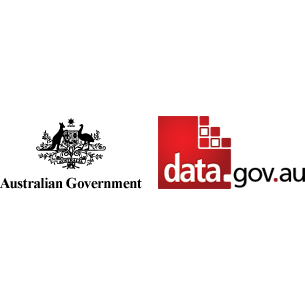Brief description
The digital ‘1:100 000 State interpreted bedrock geology of Western Australia’ comprises three layers: the primary 1:100 000 State interpreted bedrock geology, the 1:100 000 State interpreted bedrock geology lines , and the 1:100 000 State linear structure layer. The product covers approximately 30% of Western Australia, with a focus on areas of exposed Archean and Proterozoic bedrock. The linear structure layer refers primarily to pre-Cenozoic bedrock structures. This compilation is based on Geological Survey of Western Australia’s (GSWA) published Geological Information Series (GIS) and Geological Exploration Packages (GEP) for which digital 1:100 000 and 1:250 000 interpreted bedrock geology is available. The data packages included are: Kimberley 2017, Tanami–Arunta 2016, West Musgrave 2017, East Albany–Fraser Orogen 2014 (1:250 000 pre-Mesozoic), West Capricorn 2016, East Yilgarn 2017, South Yilgarn 2016, Murchison 2017, and Pilbara 2014. Geological interpretation in these packages is based on extensive fieldwork and interpretation of geophysical datasets (magnetics, radiometrics and gravity), remote sensing imagery (ASTER and LANDSAT), seismic and magnetotelluric profiles, drilling, and previously published and unpublished geological mapping. With the exception of minor topological corrections, the spatial integrity of the source packages is maintained. For adjacent but separately compiled packages, seamless interpretation along the edges of project areas has not been executed in order to preserve the spatial integrity of the source information. The nomenclature and hierarchy for the lithostratigraphic units in the polygon and line layers are based on weekly updates from the Explanatory Notes System (ENS). In order to provide the most up-to-date geological information for the units in question, attribution from the original source is modified to remove superseded stratigraphic units, display correct stratigraphic relationships, and include more recent geochronology. The source package of each feature is captured as an additional attribute field. Individual packages are available via the Department of Mines, Industry Regulation and Safety’s (DMIRS) eBookshop.Full description
Interpreted bedrock geology lines 1:100 000 (DMIRS-052) - The digital ‘1:100 000 State interpreted bedrock geology of Western Australia’ comprises three layers: the primary 1:100 000 State interpreted bedrock geology, the 1:100 000 State interpreted bedrock geology lines , and the 1:100 000 State linear structure layer. The product covers approximately 30% of Western Australia, with a focus on areas of exposed Archean and Proterozoic bedrock. The linear structure layer refers primarily to pre-Cenozoic bedrock structures. This compilation is based on Geological Survey of Western Australia’s (GSWA) published Geological Information Series (GIS) and Geological Exploration Packages (GEP) for which digital 1:100 000 and 1:250 000 interpreted bedrock geology is available. The data packages included are: Kimberley 2017, Tanami–Arunta 2016, West Musgrave 2017, East Albany–Fraser Orogen 2014 (1:250 000 pre-Mesozoic), West Capricorn 2016, East Yilgarn 2017, South Yilgarn 2016, Murchison 2017, and Pilbara 2014. Geological interpretation in these packages is based on extensive fieldwork and interpretation of geophysical datasets (magnetics, radiometrics and gravity), remote sensing imagery (ASTER and LANDSAT), seismic and magnetotelluric profiles, drilling, and previously published and unpublished geological mapping. With the exception of minor topological corrections, the spatial integrity of the source packages is maintained. For adjacent but separately compiled packages, seamless interpretation along the edges of project areas has not been executed in order to preserve the spatial integrity of the source information. The nomenclature and hierarchy for the lithostratigraphic units in the polygon and line layers are based on weekly updates from the Explanatory Notes System (ENS). In order to provide the most up-to-date geological information for the units in question, attribution from the original source is modified to remove superseded stratigraphic units, display correct stratigraphic relationships, and include more recent geochronology. The source package of each feature is captured as an additional attribute field. Individual packages are available via the Department of Mines, Industry Regulation and Safety’s (DMIRS) eBookshop.ArcGIS Server Map Service - An ArcGIS Server Map Service offers access to a geographic dataset - such as a map or imagery - by providing a set of tiled images for use in web-based maps.\n\nDepending on the capabilities enabled, this web service may also allow a client to dynamically draw, search, and query its features.\n\nThis service is aimed at advanced geographical information users, and will require access to geographical information system (GIS) software such as ArcGIS and QGIS.
Web Mapping Service - Web Map Service (WMS) is a standard protocol for serving georeferenced map images over the internet that are generated by a map server using data from a GIS database.\n\nWMS allows a user to spatially visualise the dataset, and query individual features, but does not allow downloading the raw data.\n\nThis service is aimed at advanced geographical information users, and will require access to geographical information system (GIS) software such as QGIS and ArcGIS.
Identifiers
- Local : interpreted-bedrock-geology-lines-1-100-000-dmirs-052
- URI : data.gov.au/data/dataset/5d5d6180-4936-492e-8d16-4062c94bac9b



